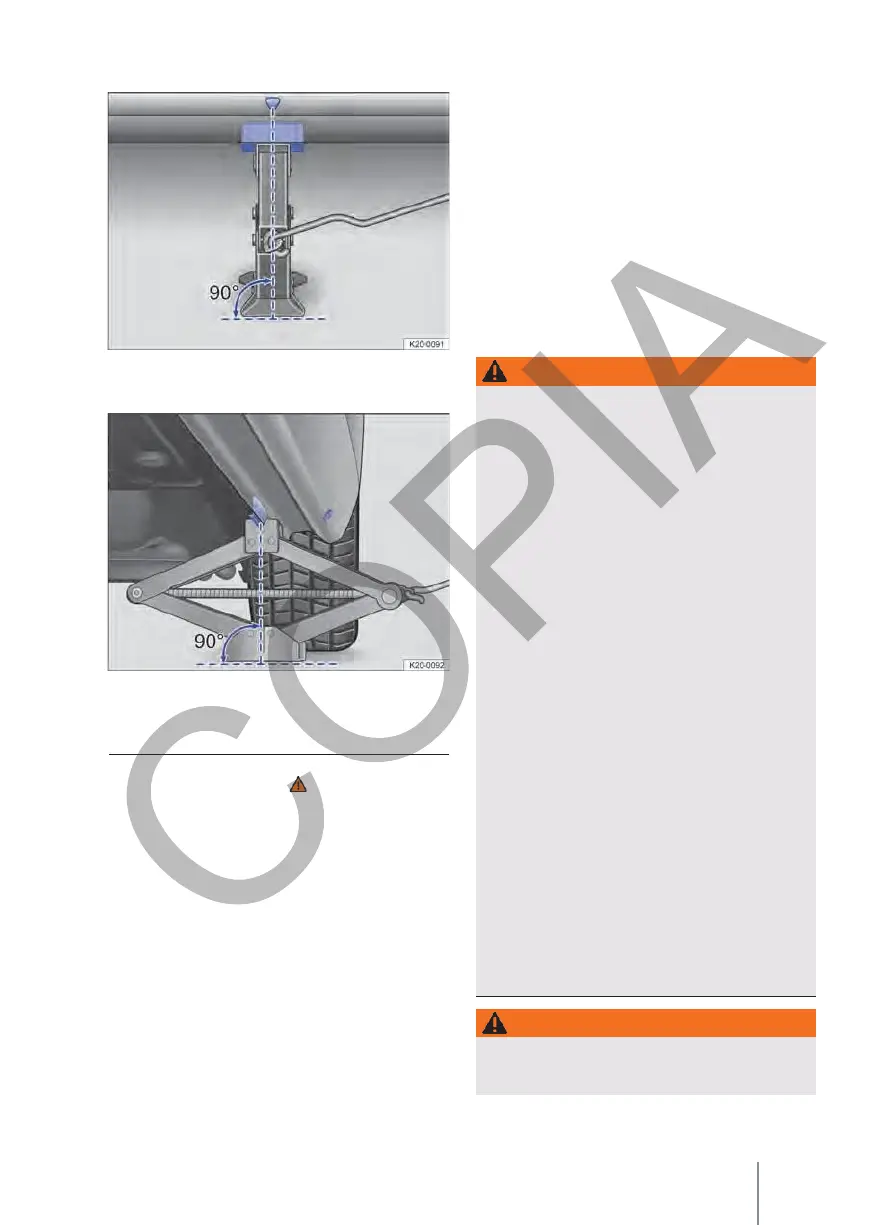Incorrect use of the jack may cause the vehicle
to slip off the jack and cause serious injury. To
reduce the risk of injury, please note the
following:
•
Only use a jack that has been approved by
Volkswagen for this vehicle. Do not even use
jacks from other Volkswagen models.
gen, as they could slip.
•
The ground should be flat and firm. If the
ground is sloping or not firm, the vehicle
could slip off the jack. If necessary, use
a wide and stable base to support the cat.
•
If the floor is slippery, e.g., tiled, use a non-slip
mat, such as a rubber mat, to prevent the cat
from slipping.
•
Only fit the jack at the described points. The
claw of the jack must hold the lower beam
securely → Fig. 196.
•
When the vehicle is raised only by the jack,
do not insert any part of the body (e.g. an arm
or a leg) underneath the vehicle's roof or under
the roof of the vehicle.
vehicle.
•
If work has to be carried out under the
vehicle, it must be additionally secured with
suitable stands.
•
Never raise the vehicle when the engine is
running or when the vehicle is on a sloping or
inclined roadway.
•
Never run the engine with the vehicle raised.
The vehicle could become detached from the
jack due to engine vibration.
For your own safety, do not ignore this important
checklist, otherwise serious accidents and injuries
may occur.
Positioning the jack
Fig. 195 Jack positioned on the left side of the vehicle,
in the rear area.
Fig. 196 Jack positioned on the left side of the vehicle,
in the rear area.
Checklist
For your own safety, please observe the following
points in the order given → :
1.
Choose flat, firm ground to lift the vehicle.
2.
Switch off the engine.
3.
If the vehicle has a manual gearbox, engage
one gear.
4.
If the gearbox is a DSG® dual clutch gearbox,
move the selector lever to the P position.
5.
Engage the electronic parking brake.
6.
Block the diagonally opposite wheel with
folding chocks or other suitable objects.
7.
Loosen the wheel bolts → page 273.
8.
Look under the vehicle for the jacking point
→ fig. 194 which is closest to the wheel to
be changed.
9.
Hook the crank handle into the jack housing
(depending on equipment).
10.
Raise the jack with the crank handle until it
can still be positioned just below the fulcrum of
the vehicle.
11.
Make sure that the entire base of the jack
rests firmly on the ground and that it is
positioned vertically just below the support
point → fig. 195 and → fig. 196.
12.
Centre the jack and continue to raise it with the
crank handle until the claw grips the jacking
point under the vehicle → Fig. 196.
13.
Keep raising the jack until the wheel is slightly
off the ground.

